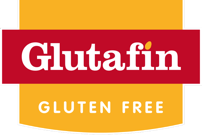
If you or someone you love has been recently diagnosed with coeliac disease, you could be eligible to receive gluten free foods on prescription. Simply select your country of residence, and, if you live in England, fill in your postcode to check if your area is prescribing.
Your country is prescribing gluten free foods*. Request your Glutafin Taster Box by clicking the button below to sign up.
* Please note: local policies are constantly updated, and issuing a prescription is at the discretion of your GP.

Since the New Stone Age, bread has been a staple part of the human diet. Yet in the middle of the 20th century, it was discovered that wheat, one of the key ingredients in bread, was a cause of serious digestive symptoms in some people. This discovery would lead to the prescribing of a gluten free diet, as a treatment for coeliac disease. And eventually, the creation of gluten free bread.
Bread making is thought to have originated around 10,000 years ago. In what was known as the ‘fertile crescent’ of the Nile Valley, Assyria and Mesopotamia. Some evidence puts the origins of bread even earlier, perhaps as far back as 14,000 years ago. These early hunter gatherers harvested grains from wild grasses, which they crushed and mixed with water to make primitive flat breads.
This wheat provided a wide range of nutrients, and it quickly became a staple part of the diet. Before long, wheat was cultivated by farming communities and its place in our diet was firmly fixed for thousands of years to come.
Wheat, and the gluten it contains, are an essential part of breadmaking. Gluten creates a matrix that traps fermentation gasses and allows the bread to rise, creating a thick dough. Without it, these gasses escape leaving just a thin batter. Gluten also helps to give bread its elasticity, creating the light, soft texture that is characteristic of most breads. Unfortunately, as many as one in a hundred people have coeliac disease and so cannot eat wheat-based bread.
The abdominal symptoms of coeliac disease were first described as early as the second century AD. By Greek physician and medical writer Aretaeus of Cappadocia. However, it wasn’t until 1888 that Samuel Gee made the connection between diet and an improvement in symptoms.
In 1924, Dr Sidney Haas created the now famous ‘banana diet’, which was successful in treating children with Coeliac disease. This diet worked more by accident than design, as it was coincidentally gluten free. It wasn’t until the 1940s that Dutch paediatrician Dr William Dicke first theorised that wheat protein was the dietary factor that triggered coeliac symptoms, after the famine in the Western Netherlands. He made the connection that during the war when supplies of bread and wheat based products was limited symptoms of coeliac disease improved for patients. It was he who went on to create the first medically prescribed wheat free diets.
Glutafin’s parent brand, Dr Schär, began life in a similar field, creating diets and food products for children with calcium deficiency in the 1920s. In 1980, the brand was taken over by Ulrich Ladurner, and turned its attention to producing gluten free products, such as biscuits for the continental market. This brand would grow to become the largest producer of gluten free foods in Europe.
While other gluten free products thrived. The complexity of the breadmaking processes, and the fundamental role played by gluten in achieving the right texture, meant gluten free bread developed much slower. Some patients with coeliac disease will remember that gluten free bread once came in a tin. Or others that bread had to be warmed in a toaster or the oven before it could be consumed.
Successful recipes and technology for soft, tasty, gluten free bread were not developed until the early 2000s. However, once the problems of creating gluten free bread were overcome, it quickly became more widely available. In both supermarkets and on prescription. Today you can choose a selection of gluten free breads and rolls on prescription from Glutafin.
Today, the gluten free market, including gluten free bread, is worth around $6.7 billion per year worldwide, and it’s growing fast. Business analyst Statista predicts that the global gluten free market will expand to $14 billion by 2032. In the UK, Mordor Intelligence predicts the UK market for gluten free products will grow by 8.7% per year over the next five years.
Not bad for a range of foods that no one had even considered just 80 years ago.
If you or someone you love has been recently diagnosed with coeliac disease, you could be eligible to receive gluten free foods on prescription. Simply select your country of residence, and, if you live in England, fill in your postcode to check if your area is prescribing.
Your country is prescribing gluten free foods*. Request your Glutafin Taster Box by clicking the button below to sign up.
* Please note: local policies are constantly updated, and issuing a prescription is at the discretion of your GP.
Share this now: